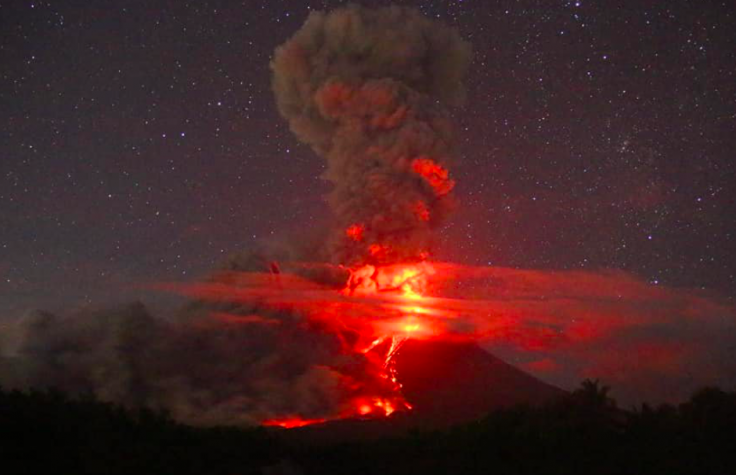Officials issue 'volcanic tsunami' warning due to the recent eruptions from the Taal volcano increasing in disaster levels.The continuous activity raised the alarm level to 4 on a scale of 1-5.
The eruptive nature shown by the Taal volcano in Batangas province, 55 miles from Manila, led the officials to release the warning on social media outlets and local news agencies. The main crater was seen spewing ash and pebbles on Sunday.
The smoke from the volcano rose as high as 9 miles in the sky. Two volcanic earthquakes which were on the lower end of the richter scale were reported in Tagaytay City and Alitagtag.

A disaster-prone nation
The site of the small volcano that erupted near Manila is a picturesque tourist spot. The Philippine Institute of Volcanology and Seismology said areas in the nine-mile radius of the volcano is in danger of "pyroclastic density currents and volcanic tsunami". Authorities are moving to evacuate around 6,000 villagers from the surrounding areas while the tsunami and eruption warnings are still in place.
ERUPTION UPDATE FOR TAAL VOLCANO
— PHIVOLCS-DOST (@phivolcs_dost) January 12, 2020
13 JANUARY 2020
03:20 AM #TaalVolcano #TaalEruption2020 pic.twitter.com/nJkwlcx4Mx
The advisory issued read that "Hazardous explosive eruption is possible within hours to days." Taal is 60 miles away from Manila, with the main crater located around 55 miles away from the capital. Several countries advised their citizens to remain safe and travel back.
Nitizen's have their own video of lightning from tsunami ash explosion.
— Diana (@M_dianagrace) January 12, 2020
Keep safe.#TaalVolcano #eruption #Prayers #keepsafe pic.twitter.com/1ijSTjpA5I
Flights have been cancelled and airlines have been asked not to fly close to the region in case of further eruption of the main crater and the possibility of escalation of the disaster. The country is prone to natural disasters and has seen deadly eruptions of the Taal volcano in the 1900's. The international flights was stopped to the country and airport closed following the initial stages of warning. The airport was partially reopened later on Monday.
There is an ongoing evacuation process happening in the country, but several refuse to leave their homes while some could not travel because of poor visibility and lack of transport.
Tagatay is one of the popular cities in Philippines that was affected by the eruption. The upland resort city overlooks the volcano. As the climate and ash has started to settle down on Monday the people of the city has started to shovel away the thick coating of ash and peddles that is covering the region.
Volcano tsunami: How does it happen?
Even though it is not so frequent, volcanic eruptions can cause impulsive disturbances, which in turn can create displacement of large amount of water creating chances of disruptive tsunamis in its source region. During the eruption and collapse of the Krakatoa volcano (Krakatau), in Indonesia, in 1883, the huge water displacement caused tsunami. The waves were said to have reached a height of 135 feet.









